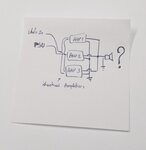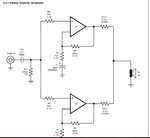thebadtall
Full Member level 6
Hello. I have a question.
Lets assume I have 2 identical amplifiers with 36 watt Pmax each.
If i connect both output to 1 typical 200w speaker, is it going to play 72 watts?
or the circuit will damage?
thank you!
Lets assume I have 2 identical amplifiers with 36 watt Pmax each.
If i connect both output to 1 typical 200w speaker, is it going to play 72 watts?
or the circuit will damage?
thank you!

